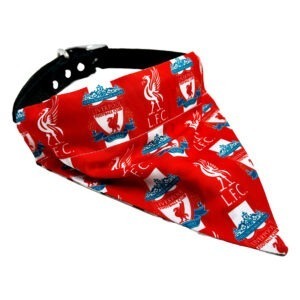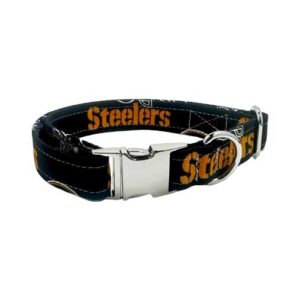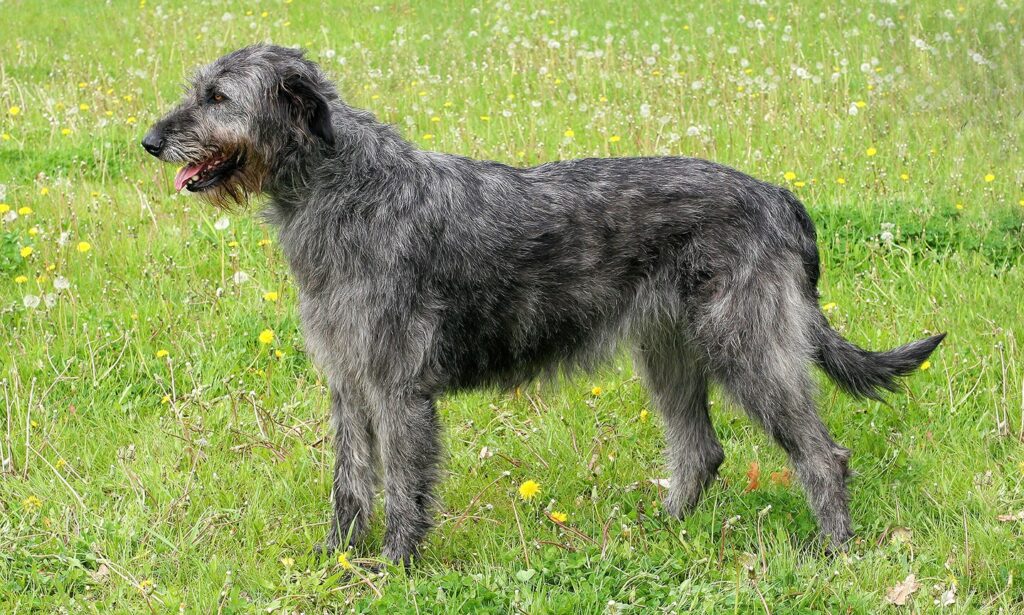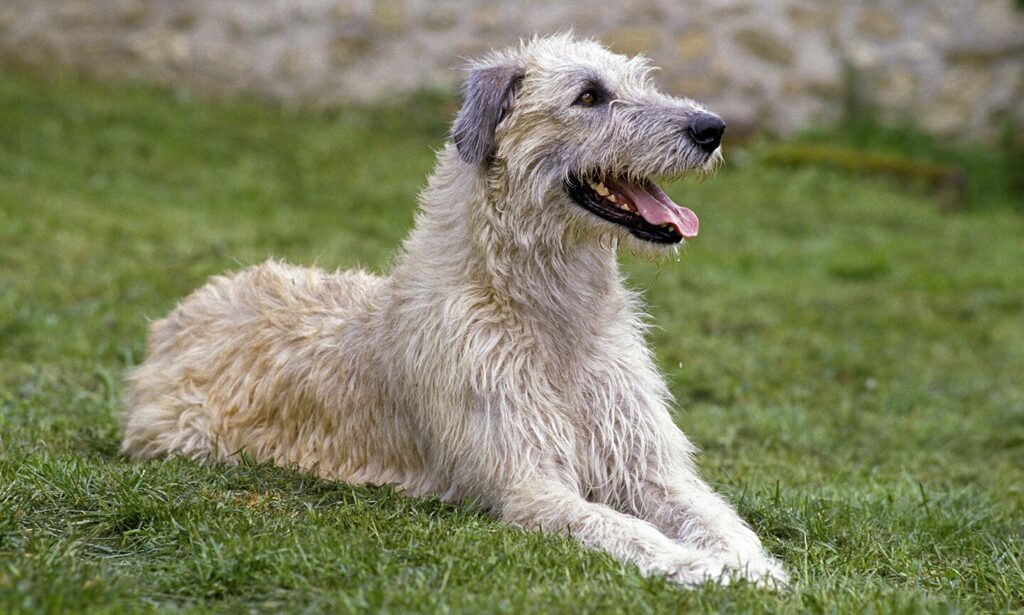Introduction to the Irish Wolfhound
The Irish Wolfhound, a breed steeped in history and legend, stands as a gentle giant among dogs. Known for its impressive stature and noble demeanor, this breed has captured the hearts of dog lovers around the world. Originating from Ireland, these hounds were historically bred for hunting wolves and guarding homesteads, a testament to their strength and bravery. Today, they are cherished companions, known for their loyalty, affection, and gentle temperament.
Despite their imposing size, Irish Wolfhounds are known for their calm and friendly nature, often described as ‘gentle giants.’ They possess a unique blend of courage and gentleness, qualities that have made them beloved by many. Their history is as fascinating as their personality – these dogs have been mentioned in Irish mythology and were highly valued by nobility throughout history for their hunting prowess and majestic appearance.
The importance of regular grooming for Irish Wolfhounds cannot be overstated. Due to their size and coat type, they require consistent care to maintain their health and appearance. Grooming is not just about keeping them looking their best; it’s also crucial for their overall well-being. Regular grooming helps in identifying any potential health issues early, such as skin conditions or parasites, and ensures that the dog is comfortable and free from discomfort caused by matted fur or overgrown nails.
Some of our latest products...
-
Bandanas de cachorro
Liverpool FC Dog Bandana
$ 13.19 – $ 16.12 USD Ver opções Este produto tem várias variantes. As opções podem ser escolhidas na página do produto -
Bandanas de cachorro
Manchester City Dog Bandana
$ 13.19 – $ 16.12 USD Ver opções Este produto tem várias variantes. As opções podem ser escolhidas na página do produto -
Bandanas de cachorro
Manchester United Dog Bandana
$ 13.19 – $ 16.12 USD Ver opções Este produto tem várias variantes. As opções podem ser escolhidas na página do produto -
coleiras
Pittsburgh Steelers Dog Collar
$ 20.52 USD Ver opções Este produto tem várias variantes. As opções podem ser escolhidas na página do produto
For prospective and current owners, understanding the grooming needs of an Wolfhound irlandês is essential. These needs go beyond the occasional bath and brush; they encompass a range of care practices that are vital for the dog’s health. This article aims to provide a comprehensive guide to grooming an Wolfhound irlandês, covering everything from the basics of coat care to the nuances of health considerations specific to the breed.
In the following sections, we will delve into the details of grooming an Irish Wolfhound, providing practical advice and tips to help owners keep their gentle giants in top condition. Whether you’re a seasoned Irish Wolfhound owner or considering bringing one into your home, this guide will equip you with the knowledge you need to care for these magnificent dogs.
Understanding the Irish Wolfhound’s Coat
The Irish Wolfhound’s coat is a defining feature of this majestic breed. It is rough and wiry, providing a rugged yet dignified appearance. This type of coat is not just for aesthetics; it serves a practical purpose. The coarse texture protects the dog from harsh weather and underbrush while hunting or roaming outdoors. The coat varies across different parts of the body, being particularly wiry over the eyes and under the jaw, forming what is often referred to as a beard.
Understanding the nature of this coat is crucial for effective grooming. The Irish Wolfhound does not have the soft, plush coat found in many other breeds. Instead, its hair is hard and dense, which can be challenging to maintain without the right approach and tools. The coat also undergoes changes with the seasons. During the warmer months, the dog may shed more to stay cool, while in colder seasons, the coat becomes thicker for insulation.
The coat’s texture and growth pattern also change as the dog matures. Puppies have a softer and fluffier coat, which gradually gives way to the adult coat as they age. This transition requires adjustments in grooming techniques and tools. The adult coat is more resistant to matting than the puppy coat, but it still requires regular maintenance to prevent tangles and to keep the skin healthy.
Regular grooming is essential for keeping the coat in good condition and for the overall health of the dog. It helps in removing dead hair and skin, stimulating blood flow to the skin, and distributing natural oils throughout the coat. This not only keeps the coat shiny and healthy but also helps in identifying any skin issues such as dry patches, lumps, or parasites early on.
In the next sections, we will explore the specific grooming needs of an Irish Wolfhound, including how often to brush and bathe your dog, the types of
brushes and shampoos that are best suited for their coat, and other grooming practices that are essential for maintaining the health and well-being of these noble dogs.
Basic Grooming Needs of an Irish Wolfhound
Grooming an Irish Wolfhound is not just a matter of aesthetics; it’s a crucial aspect of their overall health care. Given their large size and unique coat, it’s important to understand and adhere to a regular grooming routine. Here, we’ll delve into the basic grooming needs of an Irish Wolfhound, covering brushing, bathing, nail trimming, ear cleaning, and dental care.
Brushing: The wiry coat of an Irish Wolfhound requires regular brushing to prevent matting and to remove debris and loose hair. Brushing should be done at least once a week, although more frequent brushing is beneficial, especially during shedding seasons. A pin brush or a slicker brush is ideal for their coat type. When brushing, it’s important to be gentle and thorough, ensuring that the brush reaches the skin to effectively remove loose fur and stimulate circulation.
Bathing: Bathing an Irish Wolfhound is a task due to their size, but it’s necessary for keeping their coat clean and healthy. They don’t require frequent baths – once every few months is usually sufficient, unless they get particularly dirty. Use a dog-specific shampoo that caters to their coat type. It’s important to rinse thoroughly to prevent residue build-up, which can cause skin irritation.
Nail Trimming: Regular nail trimming is essential for an Irish Wolfhound. Overgrown nails can cause discomfort and lead to problems with walking and joint health. Nails should be trimmed every few weeks. It’s crucial to avoid cutting into the quick, as it can be painful and may lead to bleeding. If you’re not comfortable doing this, a professional groomer or veterinarian can assist.
Ear Cleaning: Their ears should be checked and cleaned regularly to prevent wax build-up and infections. Use a vet-approved ear cleaner and gently clean the outer ear. Avoid inserting anything into the ear canal, as this can cause injury.
Dental Care: Good oral hygiene is crucial for preventing dental diseases. Brushing their teeth several times a week with dog-specific toothpaste is recommended. Additionally, dental chews can help reduce tartar build-up.
Each of these grooming tasks plays a vital role in maintaining the health and happiness of an Irish Wolfhound. Regular grooming not only keeps them looking their best but also provides an opportunity to check for any signs of health issues.
Considerações de saúde na higiene
Grooming an Irish Wolfhound goes beyond maintaining their majestic appearance; it’s integral to their health. This section highlights how grooming can help prevent and identify health issues specific to this breed.
Skin Health: Regular grooming is vital for maintaining skin health. Brushing helps to distribute natural oils across the coat, preventing dry skin. It also allows for early detection of skin issues like hot spots, parasites, or allergies. Any unusual redness, lumps, or bald patches should be addressed promptly with a veterinarian.
Joint Health: Irish Wolfhounds are prone to joint problems due to their large size. While grooming, pay attention to their mobility and look for signs of discomfort or stiffness, especially when handling their legs and paws. Early detection of joint issues can lead to more effective management and treatment.
Weight Monitoring: Grooming sessions are an excellent opportunity to monitor your dog’s weight. Overweight or underweight conditions can be detrimental to their health. While brushing or bathing, feel for their ribs and spine; you should be able to feel them, but they shouldn’t be overly prominent.
Eye and Ear Health: Regular cleaning of the ears helps prevent infections, a common issue in dogs with floppy ears. Also, while grooming, check their eyes for any signs of irritation or unusual discharge, as eye problems can escalate quickly in large breeds.
Dental Health: Dental care is crucial. Poor dental hygiene can lead to serious health issues, including heart disease. Regular brushing of their teeth helps prevent tartar build-up, gum disease, and tooth decay.
Incorporating these health checks into your grooming routine helps ensure that your Irish Wolfhound stays healthy and happy. It’s not just about looking good; it’s about keeping a close eye on their overall well-being.
Grooming Challenges Specific to Irish Wolfhounds
Grooming an Irish Wolfhound presents unique challenges due to their large size and specific coat type. Addressing these challenges effectively is key to maintaining their well-being and making the grooming process enjoyable for both the dog and the owner.
Size Considerations: The sheer size of an Irish Wolfhound can make grooming tasks like bathing and nail trimming daunting. For bathing, it may be more practical to use a large tub or an outdoor area. When it comes to nail trimming, their size can make it difficult to hold their paws steady. It’s important to find a comfortable position for both you and your dog to ensure safety and ease during grooming.
Coat Maintenance: Their rough, wiry coat requires specific grooming techniques. Mats and tangles can be more challenging to remove due to the coat’s texture. Regular brushing with the right tools is essential. For some owners, learning the proper technique to hand-strip the coat, which involves removing dead hair by hand, can be beneficial, especially if the dog is shown.
Sensitive Areas: Irish Wolfhounds can be sensitive around certain areas like their ears, paws, and tail. Grooming these areas requires patience and gentleness. Gradual desensitization and positive reinforcement can help make grooming a more positive experience for your dog.
Health-Related Grooming: Due to their predisposition to certain health issues, such as joint problems, grooming can sometimes be uncomfortable for them. It’s important to be mindful of their comfort and to adjust your grooming techniques as needed. For example, using a raised grooming table can help prevent strain on their joints.
Professional Grooming vs. Home Grooming: Given these challenges, some owners may opt for professional grooming services for more complex tasks. However, basic grooming like brushing and ear cleaning can be easily done at home with the right tools and knowledge.
By understanding and adapting to these challenges, owners can ensure that their Irish Wolfhound’s grooming needs are met effectively, keeping them healthy and happy.
Choosing the Right Grooming Tools and Products
Selecting appropriate grooming tools and products is crucial for the effective grooming of an Irish Wolfhound. Their unique coat and size require specific items to ensure that grooming is not only effective but also comfortable for the dog.
Brushes and Combs: For their wiry coat, a pin brush or a slicker brush works best. These brushes can penetrate the thick coat and remove tangles and loose hair without causing discomfort. A metal comb with wide teeth is also useful for detangling and smoothing out the coat after brushing.
Shampoos and Conditioners: Choose a shampoo that’s specifically formulated for coarse, wiry coats. It should effectively clean without stripping natural oils from the coat or skin. A conditioner can be used to soften the coat and make it easier to manage, but it should be light enough not to weigh down the coat or make it greasy.
Corta unhas: Given their size, a heavy-duty nail clipper is necessary. Guillotine-style or pliers-style clippers are commonly used for large breeds like the Irish Wolfhound. Ensure that the clipper is sharp and well-maintained to avoid splitting the nails.
Ear Cleaning Solutions: Opt for a gentle, dog-specific ear cleaning solution. It should effectively clean without causing irritation. Cotton balls or soft pads can be used for applying the solution and cleaning the ears.
Toothbrushes and Toothpaste: Use a large toothbrush suitable for their size, with soft bristles to avoid gum damage. The toothpaste should be formulated for dogs, as human toothpaste can be harmful to them.
Grooming Table: For those who choose to groom at home, a large, sturdy grooming table with a non-slip surface can make the process much easier and more comfortable for both the dog and the owner.
Investing in high-quality grooming tools and products not only makes the grooming process more efficient but also ensures the comfort and safety of your Irish Wolfhound during grooming sessions.
Tratamento profissional versus tratamento doméstico
Deciding between professional grooming services and home grooming is an important consideration for Irish Wolfhound owners. Each option has its benefits and challenges, and understanding these can help you make the best choice for your dog’s needs.
Professional Grooming:
- Advantages: Professional groomers are equipped to handle large breeds like Irish Wolfhounds. They have the experience, tools, and facilities to manage the grooming needs efficiently. Professional grooming can be particularly helpful for more complex tasks like nail trimming, ear cleaning, and thorough coat care.
- Considerations: It’s important to find a groomer experienced with large breeds and who understands the specific needs of an Irish Wolfhound. The cost of professional grooming can add up, especially considering the size of the dog and the frequency of visits required.
Home Grooming:
- Advantages: Home grooming allows for more frequent care, which is beneficial for maintaining the coat and overall health of the dog. It also provides an opportunity for bonding between the dog and the owner.
- Challenges: Home grooming requires the right tools and a significant amount of time and patience, especially for a breed as large as the Irish Wolfhound. There’s also a learning curve involved in mastering the techniques for effective grooming.
Combining Both Approaches: Many owners find a balance by combining professional and home grooming. Routine tasks like brushing and basic coat maintenance can be done at home, while relying on professionals for more challenging tasks like deep coat cleaning and nail trimming.
Regardless of the choice, the key is to ensure that the grooming needs of the Irish Wolfhound are met consistently. Whether at home or with a professional, regular grooming is essential for the health and well-being of these magnificent dogs.
Grooming as a Bonding Activity
Grooming an Irish Wolfhound offers more than just the physical benefits of a clean and healthy coat; it can also be a significant bonding activity between the dog and its owner. This section explores how grooming can strengthen the relationship and enhance the emotional well-being of both the dog and the owner.
Building Trust: Regular grooming sessions help in building trust. As the dog becomes accustomed to being handled, it learns to trust the owner’s touch. This trust is crucial, especially for a breed as large and powerful as the Irish Wolfhound.
Understanding Your Dog: Grooming allows owners to understand their dog’s body language and comfort levels. It’s an opportunity to learn what they enjoy or dislike, helping to tailor the grooming process to their preferences, which can make it a more enjoyable experience for them.
Relaxation and Comfort: For many dogs, grooming can be a relaxing experience. Gentle brushing can be soothing and can help reduce stress and anxiety. It’s also a time when owners can check for any signs of discomfort or health issues, addressing them promptly.
Quality Time Together: In our busy lives, grooming sessions can be a dedicated time for owners to bond with their Irish Wolfhound. It’s an opportunity to give them undivided attention, which is beneficial for their emotional health.
Reforço positivo: Using treats and praise during grooming sessions can reinforce positive behavior. This not only makes grooming easier but also strengthens the bond through positive associations.
Incorporating grooming into your routine with your Irish Wolfhound is not just about keeping them well-groomed; it’s about nurturing a deeper connection with your gentle giant.
Conclusão
Grooming an Irish Wolfhound is an essential aspect of their care, encompassing much more than just maintaining their impressive appearance. It plays a crucial role in their overall health and well-being. Through regular grooming, owners can ensure their Wolfhound’s coat remains healthy, identify any potential health issues early, and maintain their general hygiene. Moreover, grooming sessions offer a wonderful opportunity for bonding, building trust, and understanding between the dog and its owner.
As we have explored, grooming an Irish Wolfhound involves a combination of brushing, bathing, nail trimming, ear cleaning, and dental care. Each of these tasks requires patience, the right tools, and an understanding of the breed’s specific needs. Whether choosing to groom at home, seeking professional services, or combining both, the key is consistency and care.
Remember, grooming is not just a chore; it’s an act of love and care that enhances the quality of life for your Irish Wolfhound. By incorporating these practices into your routine, you are not only ensuring their physical health but also nurturing a deep and enduring bond with your gentle giant.
perguntas frequentes
How often should I brush my Irish Wolfhound?
Brushing should be done at least once a week, though more frequent brushing is beneficial, especially during shedding seasons.
Can I bathe my Irish Wolfhound at home?
Yes, you can bathe your Irish Wolfhound at home, although their size might make it challenging. Ensure you have enough space and use a dog-specific shampoo.
How do I trim my Irish Wolfhound’s nails if they are too large to handle?
If you find it difficult to trim your dog’s nails due to their size, consider seeking help from a professional groomer or veterinarian.
Is it necessary to clean my Irish Wolfhound’s ears regularly?
Yes, regular ear cleaning is important to prevent wax build-up and infections, especially in dogs with floppy ears like the Irish Wolfhound.
How can I make grooming a positive experience for my Irish Wolfhound?
Be gentle and patient during grooming sessions, use treats and praise to reinforce positive behavior, and try to make it a relaxing and enjoyable experience for your dog.








